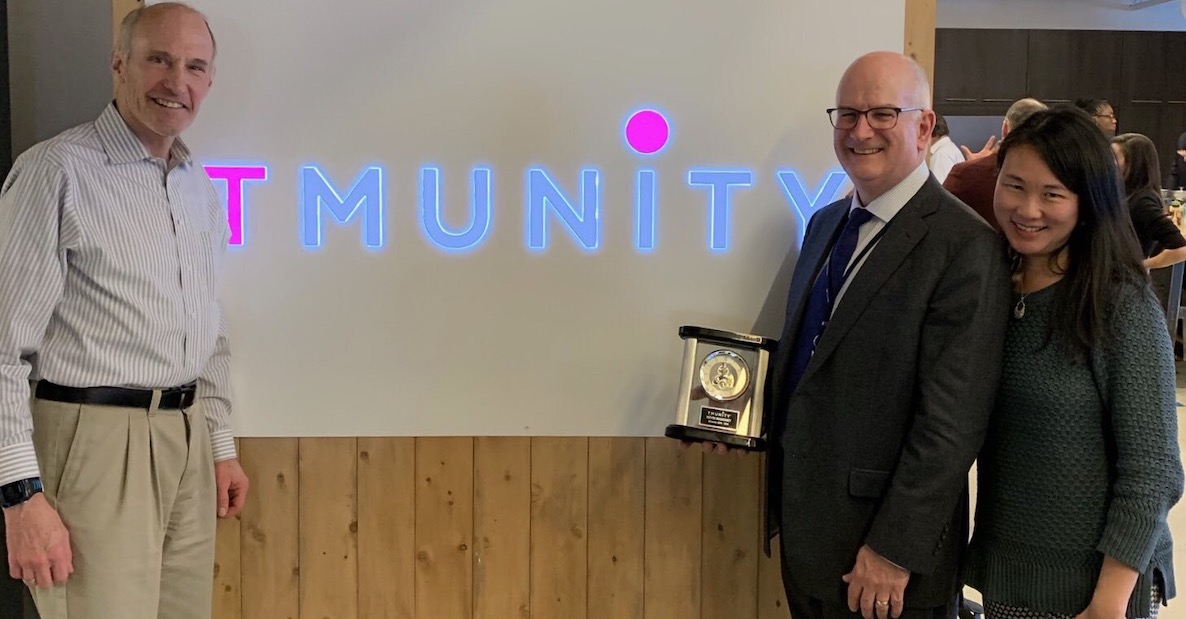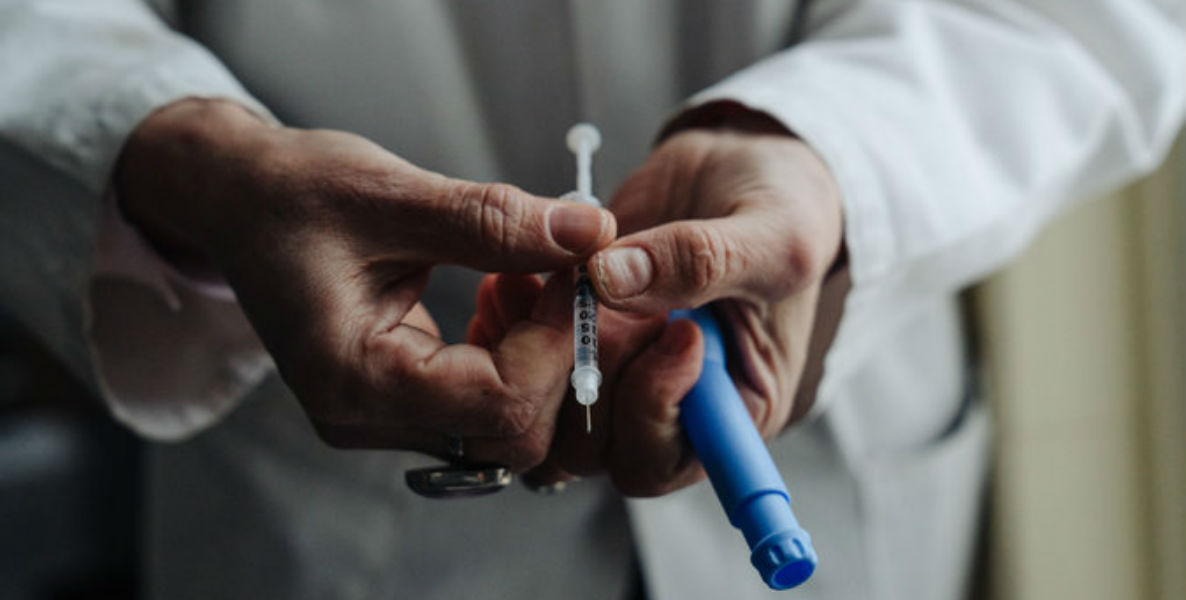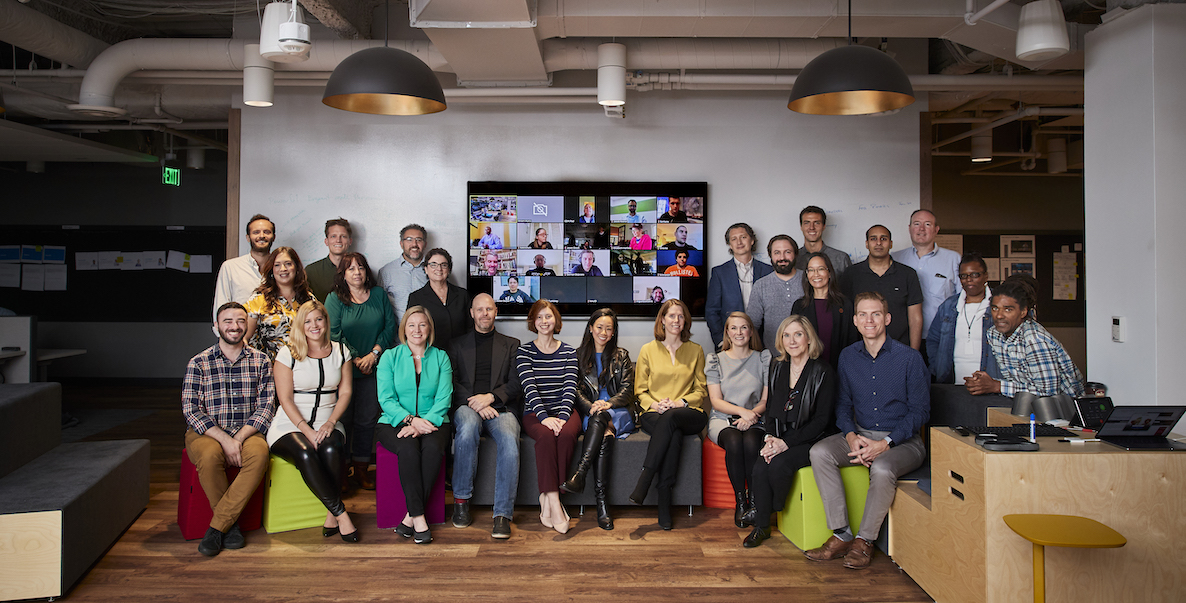There is a line, in the bro-comedy Wedding Crashers, in which Christopher Walken, in recognition of his daughter’s betrothal, makes a toast to the joining of “two great American families.” And one can’t help but hear echoes of that same refrain when considering Quil Health, the new joint venture between Comcast and Independence Blue Cross (IBX).
That two of the city’s largest businesses have come together to solve one of our country’s most complex problems by creating a first-of-its-kind digital health platform is, to put it mildly, Big News.
But equally big are the problems Quil is looking to address: patient health, provider burnout, needless and costly hospital readmissions, inflated healthcare costs. And so on.
Quil aims to reduce the several trillion dollars spent annually on healthcare nationwide by providing a full-service, interactive online platform to help address the follow-up and preventive care that keeps patients healthy, and keeps insurers and hospitals from spending money needlessly.
So, for example, say you’re one of the tens of millions of Americans who are part of the sandwich generation, those raising kids and tending to their aging parents—-the example Quil’s CEO, Carina Edwards, likes to use is of a 42-year-old woman with two teens who recently found out she was pregnant…and whose older kid just tore her ACL…and whose aging parents need in-home care. Right now, dealing with all of those issues would involve multiple calls to (and missed return calls from) healthcare offices, extensive time from providers (i.e. nurses and physicians), and perhaps several possibly-unnecessary, panicked, post-procedure visits to the ER, which could result in taxing readmissions for any one of the patients involved in this scenario.
But with Quil, patients would have a secure, streamlined portal to address all of these needs at once—via phone, iPad, or their TV. That mom could get reminders about what she should be doing for a healthy pregnancy; videos on wound care and post-surgical stretches for her teen’s ACL surgery; updates on her aging parents’ mobility at their home. She’d avoid unnecessary ER visits and the equally unnecessary, and costly, testing that would be performed. She’d save time, money, and likely a bit of her sanity.
“First and foremost, we are looking to help patients and their support teams organize and navigate their health life,” Edwards says one Friday morning from the sixth floor of IBX’s Market Street office, where her team has a space straight out of startup central casting: There’s the requisite open floor plan and full-wall whiteboard; the open kitchen with graphite-gray subway tile; a vintage-style bowling alley table and colorful ottomans; and, playing softly over hidden speakers,You Make Me Feel Like Dancing and You Can Feel it All Over, courtesy of Spotify (which, yes, is available on Comcast’s Xfinity dashboard).
The idea for Quil, whose name pays homage to the notion of tranquility in medicine and the pen used to write prescriptions, came out of ongoing explorations by and between IBX and Comcast; the two are not only neighbors, but Comcast is IBX’s largest self-insured customer. (Both Comcast and IBX are sponsors of The Citizen’s Ideas We Should Steal Festival.)
Stories about healthcareRead More
“We realized that all the stakeholders in healthcare need to look at the world using a consumer lens, rather than from other perspectives,” Lobley said.
Edwards came on board as CEO in April. A 25-year veteran of healthcare tech whose first job out of college involved deploying the ambulatory data system to every Naval hospital in the world, she moved to Philly last spring from health-tech hotbed Boston and exudes a warm, varsity-soccer-captain-meets-class-president magnetism. She acknowledges just how lofty Quil’s vision is, and its parallels to, say, Google’s mission of “organizing the world’s data.”
Her team plans to tackle these ambitious goals by harnessing the reach and technology of Comcast and the medical expertise of IBX to create a highly customized, interactive platform. With 30 million people in the US in possession of a home cable box, and Comcast reaching about 80 million eyeballs each day, it’s the television piece in particular that experts like Seth Feuerstein, a psychiatrist and the Executive Director of the Center for Digital Health, Innovation and Excellence at Yale, say provides the most interesting potential point of differentiation.
“There are about 4,000 digital health solutions out in the market, and they’re very niche and one-condition-specific. And so we actually built this platform, to address any condition, any journey,” Edwards says.
“A lot of people [in the health tech sphere] are ignoring television, but there’s clearly a lot of people who spend a lot of time sitting on a couch watching television. It’s a unique opportunity to provide interventions, to communicate, and to gather data,” says Feuerstein, who in 2014 sold the healthcare software he created, Cobalt, to Magellan.
Kelly Devine-Hollander, Quil’s VP of Marketing and Communications, explains that Quil works directly with clients to incorporate and deliver their prescribed clinical content and guidelines to patients, caregivers, and members; the company also sources medical content through a contractual arrangement with an evidence-based content supplier.
“There are about 4,000 digital health solutions out in the market, and they’re very Learn more about the cost of U.S. healthcareDo Something
Over the last 14 months, as Quil has been in pilot mode, they’ve rolled out models that address discrete health experiences: orthopedic surgery, bariatric surgery, and pregnancy. Their platform is already in use at Penn Medicine orthopedics and in partnership with Muve Health, a network of specialty joint replacement facilities, and with two other not-yet-public partners; it currently reaches 1,000 patients.
In 2020, Quil plans to start offering the service, through the hospitals and clinics it works with, to patients’ caretakers. In the future, the company will offer in-home sensors, akin to the ones Xfinity Home Security customers currently have for their security alarms, with the capability to detect motion, do gait analysis, alert caretakers, and more, with all data incorporated into users’ profiles for their care team to assess. (Edwards is clear that Quil will not be using media consumption data, like time spent watching TV or hours at which TV-watching happens, to create advertorial content related to, say, insomnia.)
And as those Comcast trucks criss-cross the country installing sensors next year, Quil will also focus heavily on proving their concept: They’re starting with their model targeting providers, with direct-to-patient sales to follow.
With 30 million people in the US in possession of a home cable box, and Comcast reaching about 80 million eyeballs each day, it’s the television piece in particular that provides the most interesting potential point of differentiation.
As a joint venture, Quil won’t talk about its financials publicly, or share how much of an investment its two parents put into the company at the outset (other than confirming that the venture is fifty-fifty). But Feuerstein, for one, cautions against putting too much pressure on delivering proof-of-concept too quickly.
“Companies like Comcast or IBX, they historically think about quarterly and annual numbers when they really need to be planning out five and 10 years, not five and 10 quarters. And so that’s actually the biggest risk factor,” Feuerstein says. He points to the fact that the most successful tech companies—Amazon, Apple—recognize that just getting to one percent [in growth] in one year is a huge success. “The human genome project took something like 16 years: It took eight years to do one percent of the genome and eight years to do the other 99 percent,” he adds, by way of example.
Edwards feels confident in the support of the corporate parents who begat Quil, and the diverse, 75-person team who’s leading it forward, which includes staff at Philly HQ, in a New York office, and at remote home-offices around the country; and she’s proud to have taken the ParityPledge, committing to interview at least one qualified woman for every VP-level-or-higher opening.
“Yes we have two amazing parents, but remember, we are 14 months old,” Edwards says. “And we are going to earn our stripes like everybody else.”
Header photo: Members of the Quil team, by Jonathan Pushnik of Pushnik Photography, LLC







